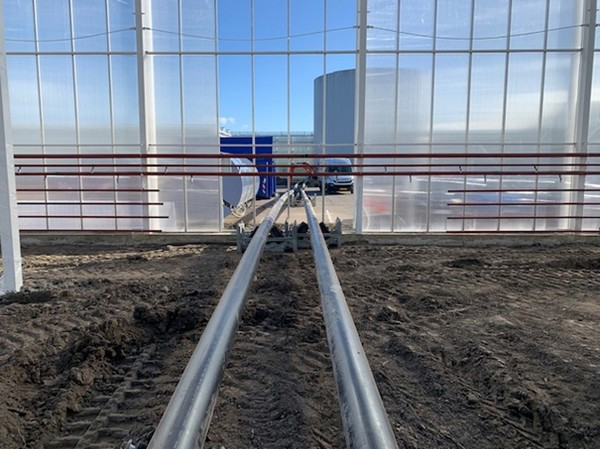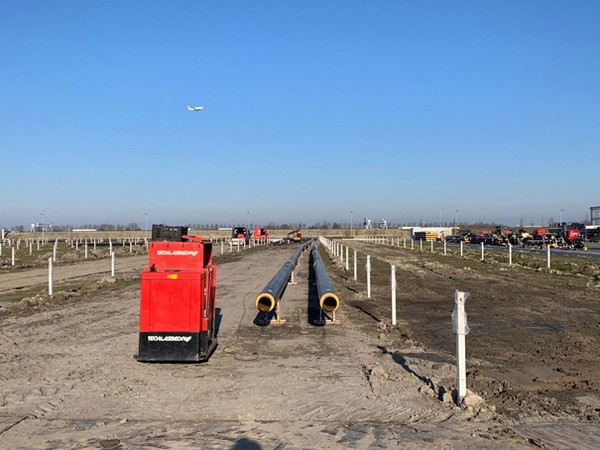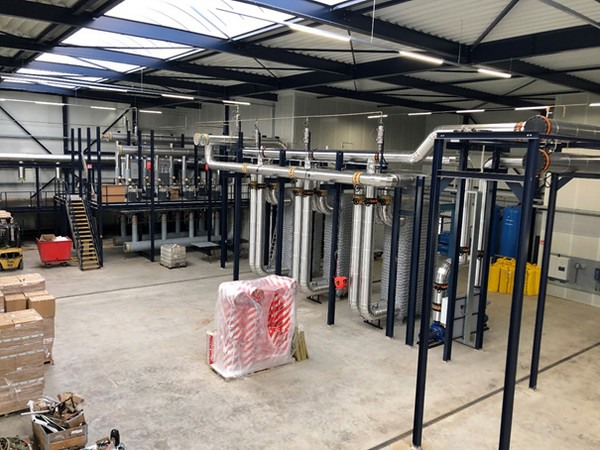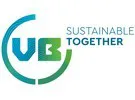What do a Dutch vegetable breeder, a strawberry grower, a tomato grower, and a grower of specialty peppers have in common? Well, for one thing, they are building a new greenhouse, but they also 'share' the same greenhouse heating system, namely VB Climate. This year, the company is installing new greenhouse heating systems for Rijk Zwaan, Royal Berry, Schenkeveld, and Frestia. One striking 'trend' is that the emphasis in all projects is on cooling back. Marco de Bruijne, Operational Director at VB Climate, runs through four projects with us. The project at Frestia has already been discussed.
Return as cold as possible for Rijk Zwaan
He starts close to home, in De Lier. Rijk Zwaan is currently building 1.35 hectares of greenhouse there. The greenhouse is now glass-proof and so VB can get to work. "We have been doing everything for Rijk Zwaan at their locations in De Lier for years. This project involves a greenhouse without a separate boiler house. We are connecting the greenhouse to an existing boiler house of a nearby Rijk Zwaan greenhouse. We are also connecting it to the 10-hectare project completed two years ago. For that purpose, in week 8 we drilled a connecting pipeline, under a greenhouse, connecting two locations. As a result, Rijk Zwaan has now linked its glasshouses in clusters and the glasshouses will soon all form one large heat network. Moreover, two locations have already been prepared for connection to Trias Westland's geothermal heat network."

Piping for Rijk Zwaan in De Lier
Because of the (future) use of geothermal heat and possibly also residual heat, it is important to take cooling into account when installing greenhouse heating. In order to 'return as cold as possible', the installer in the greenhouse in De Lier installs the groups 'in cascade'. "The water first goes through the pipe rail tube and then through the growth tube. In this way, the warm water travels as far as possible to cool down. Because of the wide selection of varieties and crops Rijk Zwaan cultivates, they opt for a high degree of flexibility. In that respect, it differs from some regular production growers. There, too, they cool down, but whereas Rijk Zwaan can handle a little more temperature variation with separate mixing groups and can bring in heat at high or low levels, that doesn't always apply to production growers."
Strawberry grower counts on CHP
The Royal Berry and Schenkeveld projects involve production growers. Strawberry grower Royal Berry will be adding 12.2 hectares of greenhouse in Bergerden this year. It will be an independent location, despite the fact that there is a heat network in the area, already constructed by VB. "The grower will get a CHP, but everything will be laid out so that residual heat or geothermal heat can be connected in the future without having to make a lot of adjustments. Everything that goes into the ground in terms of piping must be suitable for such heat sources."
In addition to a CHP, the strawberry grower will get a buffer tank and a boiler. The installer will start building the buffer tank "shortly", says Marco. "In week 15 the ground pipes will follow, directly after the glazing. This will be followed by greenhouse heating. We will be finished there in July. Then we will have a serious block for strawberries, in which they can also be grown in winter."
Involved at all four phases at Schenkeveld
After the summer, VB will start at Schenkeveld's Schiphol location. This will be the fourth block, following three earlier expansion phases for the tomato grower there. VB was involved in all four projects. "Last year we were awarded the contract for phases 3 and 4 at the same time. In phase 3, we have already prepared everything in the boiler house for the fourth greenhouse. Therefore, our main job will soon be to install the greenhouse heating."

Work at Schenkeveld Schiphol
Schenkeveld will not be getting a cascade system but has opted to optimally cool the CHP heat with a separate Low and High-Temperature network (LT/HT network) that has been laid. "There is a separate HT and LT transport pipe from the boiler house. The extra meters of pipe is in the boiler house, not in the greenhouse. This choice also means that the mixing groups are in the boiler house, and less in the greenhouse." The greenhouse should be ready in November.
More than 100 hectares of greenhouses for Hoogweg
Apart from the projects mentioned above, VB is also active internationally. In the Netherlands, Marco expects new construction projects to slow down somewhat due to the high gas prices. Marco is particularly proud of one project in the Netherlands. At Hoogweg Paprika Nurseries, drilling is currently underway again for new geothermal wells. "We have been working for Hoogweg for many years and, in addition to the first geothermal well, have also provided heating systems for more than 100 hectares of greenhouses."
The grower in Luttelgeest will be getting two more geothermal wells. The wells must be in production by the autumn. VB and its geothermal department are responsible for the engineering and realization of the complete above-ground installation consisting of, among others, two degassing tanks, 8 titanium heat exchangers duplex booster/injection pumps, and heat pumps for cooling the return. This installation will be put into operation in mid-September.

Geothermal installation for Hoogweg
For more information:
Marco de Bruijne 
VB
m.bruijne@vb.nl
www.vb.nl
